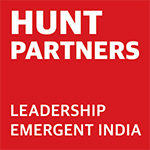With a single-minded focus to make India a global manufacturing hub, the ‘Make in India’ initiative was launched by Prime Minister Narendra Modi in September 2014. India today is the world’s third-largest pharmaceutical market globally in terms of volume. The country is the largest supplier of cost-effective generic medicines to the world, accounting for 20% of global exports.
Did You Know?
India’s Pharmaceutical Sector:
• 6th largest contributor to FDI in India
• USD 55bn market by 2020
(Source: http://www.makeinindia.com/sector/pharmaceuticals)
• Largest provider of Generic drugs globally
• 100% FDI allowed for medical devices
In other words, the pharma industry has been ‘making in India’ and is a powerhouse of low cost generics manufacturing. However there is still ample opportunity to enhance growth. To do so, some of the initiatives to boost manufacturing and employment in the sector include:
1. Foreign Investments into the Indian economy:
The existing FDI policy allows 100 per cent FDI under automatic route in greenfield projects and up to 100 per cent FDI under government approval in brownfield.
There are several examples of Pharmaceutical companies’ investing in India and boosting Indian manufacturing industry:
• October 2014: Abbott opened its first greenfield nutrition manufacturing plant at Jhagadia, Bharuch, in Gujarat with an investment of Rs 450 crore
• January 2015: Sanofi investing Rs 460 crore to set up a new insulin facility in Hyderabad
• April 2015: Hospira invested Rs 2500 crore in its manufacturing facility in Visakhapatnam
• September 2015: Abbott is working to meet the growing needs in India and export branded generic pharmaceuticals to other emerging markets in Southeast Asia and Africa through capacity expansion at its pharmaceutical manufacturing plant in Baddi.
• September 2015: GlaxoSmithKline ($GSK) has started work on a new plant in India that is expecte
• February 2016: GSK Pharmaceuticals is undertaking Rs 500 crore upgrade of its Nashik unit to expand its portfolio of thyroid and dermatology products
2. Increase in Exports:
With the government’s thrust towards manufacturing under the ‘Make in India’ initiative, the industry recorded a 9.7% increase in exports in FY 2015-16.
Challenges
The sector continues to face some challenges that are impacting growth- particularly in the areas of Compliance.
Various Indian companies including bigwigs such as Wockhardt, Dr Reddy’s Laboratories and Sun Pharma have faced the rage of USFDA for not following drug manufacturing standards.
Consequently, India’s top pharmaceutical entrepreneurs have been urging the industry to fix their compliance issues with regulators to establish India as the producer of best quality medicines and give a fillip to the Government’s Make in India initiative.
More Suggestions to Boost Growth:
i. Shift from generic drugs to innovations:
Move beyond being mere generic players. India must look beyond to innovate and capture the potential $800-billion pharmaceuticals market.
ii. Change in educational curriculum proposed:
Fix the curriculum of pharmacy colleges in India wherein many of the current pains of the pharma sector, such as data integrity, are given top priority.
iii. Abolishing Price Control:
Under the provisions of Drug Price Control Order 2013, only the prices of drugs that figure in the National List of Essential Medicines are monitored and controlled by the regulator- the National Pharma Pricing Authority. Under the earlier avatar of the DPCO (1995), 74 drugs were subject to price control. In the 2013 version, the number of drugs under the price control had expanded five-fold to 348.
CONTRARIAN VIEWS
1. Foreign Investments into the Indian Economy:
Because of the government’s decision to increase (FDI) to 74% in existing pharmaceutical companies through the automatic route, generic companies are now at a greater risk of being acquired. They might no longer play a role in meeting the public health needs of the developing world.
2. Withdrawal of customs duty exemption:
A notice by the Central Board of Excise and Customs has called for the withdrawal of customs duty exemption on at least 74 drugs – including life-saving ones used to treat cancer and HIV and hemophilia. An increase has also been made in the customs duty rates of certain life-saving drugs. This has impacted affordable access to medicines and exemption of duty on imported drugs
